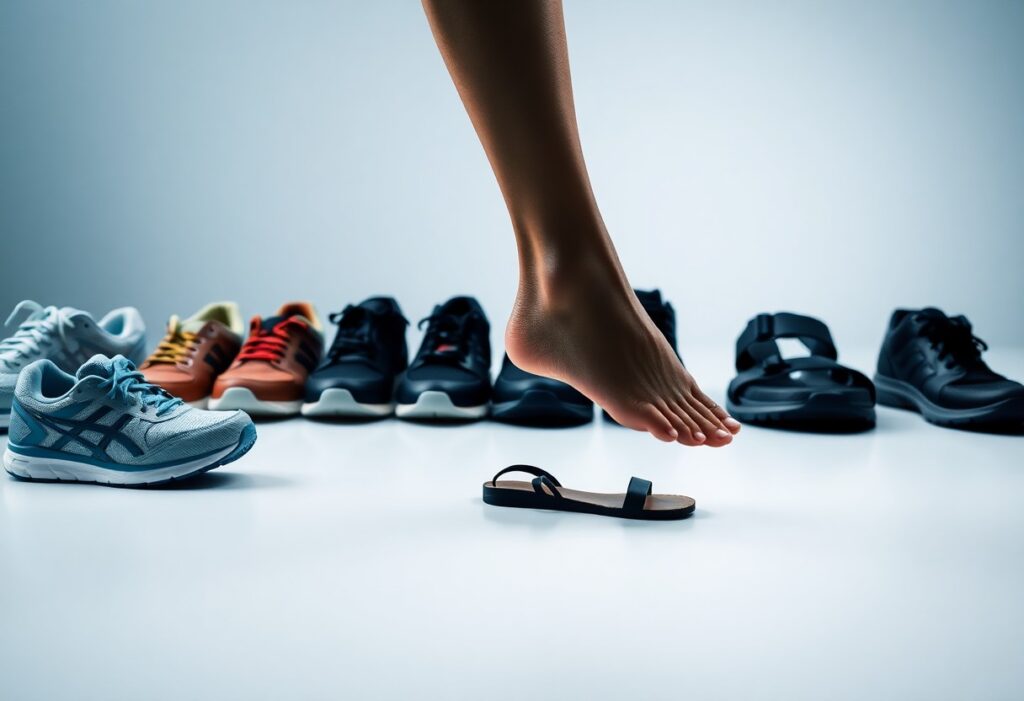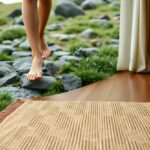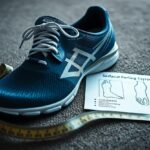
As you move throughout your day, the choice of footwear can play a pivotal role in either improving or deteriorating your foot health. Many people mistakenly assume that shoes designed with enhanced cushioning and support are the best remedy for foot discomfort; however, conventional shoes often contribute more harm than good. According to Dr. Alissa Kuizinas, a respected podiatrist from Massachusetts, barefoot shoes or minimalistic footwear are recommended for fostering stronger and healthier feet. By opting for shoes that allow your feet to function naturally, you can significantly reduce the risk of developing foot problems and promote your overall foot wellness.
Recognizing the Limitations of Conventional Footwear
While traditional shoes may provide temporary comfort for foot pain, they frequently exacerbate existing conditions and introduce new complications, as emphasized by Dr. Alissa Kuizinas. She points out that the $133 billion shoe industry often emphasizes aesthetics and profit margins over genuine foot health, resulting in designs that can constrict and weaken your feet over time. This dependency on conventional footwear can create a cycle that ultimately undermines your long-term foot health.
How the Shoe Industry Fails to Address Foot Health Concerns
The fundamental issue lies in the shoe industry’s flawed approach to tackling foot health, which often centers on adding excessive cushioning, support, and rigid construction to shoes without addressing the root causes of discomfort. This strategy can cultivate a dependency on shoes that actually deteriorate your foot health over time, leading to a range of complications that could have been easily avoided.
Spotting the Design Flaws in Traditional Footwear
Many traditional shoe designs incorporate narrow toe boxes, stiff soles, and excessive cushioning that can impede natural foot movement, ultimately resulting in weak and dysfunctional feet. Dr. Kuizinas asserts that footwear should protect your feet from external factors rather than restrict their natural mobility. An ideal shoe design should prioritize natural foot function and embrace minimalist qualities, such as roomy toe boxes, flexible and flat soles, and minimal cushioning to enhance foot health.
By choosing barefoot shoes or minimalistic footwear, you actively promote strengthening your feet and improving your overall foot wellness. Dr. Kuizinas advocates for a principle of utilizing as little shoe as possible, allowing your feet to function naturally and move freely, which is crucial for sustaining healthy foot mechanics.
The Essential Importance of Natural Foot Mobility
Footwear that restricts your foot’s ability to move freely can lead to a variety of foot issues and discomfort. It’s crucial to analyze how your selection of shoes impacts not only your immediate comfort but also your overall foot health in the long run.
Evaluating the Impact of Footwear on Natural Foot Movement
To fully understand how shoes influence your foot’s ability to move, it’s imperative to examine the specific design and features of your chosen footwear. Traditional shoes often incorporate cushioning and support elements that can actually hinder your foot’s natural ability to move, resulting in weak and dysfunctional feet over time. This limitation can obstruct your feet from developing the necessary strength and flexibility they require to function optimally.
Realizing the Benefits of Natural Foot Movement
The benefits of allowing your feet to move naturally are profound, as strong feet are foundational to overall foot health. By choosing minimalistic shoes or barefoot footwear, you enable your feet to perform as intended, fostering strength and resilience in the process.
Natural movement is vital for developing strong feet. When your feet are constrained by traditional footwear, you increase the likelihood of encountering various foot problems and discomfort. On the other hand, adopting minimalistic shoes or barefoot options can greatly enhance your foot health by allowing for natural movement and encouraging strength-building. By making informed choices about your footwear, you can reduce your risk of developing foot issues and improve your overall foot wellness.
Understanding the Concept of Functional Footwear
Gaining a comprehensive understanding of functional footwear is essential, as these shoes prioritize both foot health and natural movement. Functional shoes are specifically designed to allow your feet to function as nature intended, eliminating the need for excessive support or confinement.
Defining Functional Footwear and Its Key Attributes
Upon thoroughly researching and testing various shoe styles, you will notice that functional footwear is characterized by specific features, including a wide toe box, flat and flexible soles, in addition to minimal cushioning and support. These elements encourage your feet to move freely and naturally, promoting stronger and more capable foot mechanics.
Benefits of Functional Footwear for Enhanced Foot Health
Wearing functional shoes offers numerous advantages, such as improved foot strength, a reduced risk of injuries, and enhanced overall foot health. These shoes allow your feet to operate as they were designed to, paving the way for stronger feet and better balance in your day-to-day activities.
Conceptually, functional footwear is engineered to support your feet without imposing unnecessary limitations, enabling them to flex and move naturally. This design philosophy fosters optimal foot health and minimizes the likelihood of experiencing foot ailments. By opting for functional shoes like barefoot shoes or minimalistic options, you actively promote healthy foot function and lower the chances of foot pain and injury. Transitioning to functional footwear may require gradual adjustments, but the long-term rewards for your foot health are immeasurable.
Identifying the Essential Features of Functional Footwear
To achieve optimal foot health, it’s crucial to seek out shoes that come equipped with specific features. The key attributes to consider include:
- Wide toe box
- Flat and flexible soles
- Minimal cushioning and support
Being mindful of these characteristics will greatly assist you in selecting shoes that encourage healthy foot function and support.
Understanding the Significance of Wide Toe Boxes and Flexible Soles
A vital feature of functional shoes is a wide toe box, which allows your toes to spread naturally. This design helps avert toe jamming and other discomfort-related issues that could result in chronic foot pain.
Recognizing the Necessity of Minimal Cushioning and Support
In addition to a wide toe box, functional shoes should incorporate minimal cushioning and support. This design approach allows your feet to move freely while simultaneously strengthening foot muscles, thereby decreasing the risk of foot issues.
It’s important to emphasize that minimalistic footwear, including barefoot shoes, can significantly enhance your foot health by enabling your feet to function naturally. By choosing shoes with minimal cushioning and support, you can bolster muscle strength in your feet and reduce the chances of injuries. This thoughtful approach not only improves your overall foot health but also diminishes the likelihood of experiencing chronic pain. Hence, it is advisable to prioritize shoes that allow your feet to move freely without excessive cushioning or support.
Navigating the Transition to Functional Footwear
Having recognized the importance of functional footwear, it’s time to begin your transition. Contrary to the common belief that more cushioning and support equate to better comfort, you should opt for minimalistic shoes or barefoot shoes that support your feet’s natural capabilities.
Practical Steps for Transitioning to Functional Footwear
Despite any initial hesitations, you can start integrating functional shoes into your everyday life with these practical suggestions:
- Begin with short walks and gradually increase the distance
- Choose shoes that feature a wide toe box and flat soles
- Select minimal cushioning and support
The key is to allow your feet the necessary time to adapt to the new shoes while simultaneously strengthening the muscles in your feet.
Highlighting the Importance of Patience and Gradual Adjustment
Transitioning to functional footwear requires both patience and a gradual approach. Shoes that are overly minimalist can lead to discomfort and pain if your feet aren’t accustomed to them. Starting slowly is essential, giving your feet the opportunity to acclimate to the new footwear.
Footwear options such as barefoot shoes or minimalistic shoes can be extremely beneficial for your foot health, but it’s crucial to introduce them at a measured pace. Overuse or improper sizing can result in injuries or persistent discomfort. Your ultimate objective is to strengthen your foot muscles while enhancing your overall foot health; therefore, be patient and resist the urge to rush the process. The benefits will be substantial; anticipate experiencing better balance, less pain, and stronger feet.
Fostering Strong and Functional Feet
Even in a society where footwear with excessive cushioning and support is the standard, you can cultivate strong and functional feet by choosing the right shoes.
Understanding the Role of Foot Strength in Overall Well-Being
Alongside various health factors, foot strength plays a crucial role in your overall well-being, significantly affecting your balance, posture, and movement capabilities.
How Functional Footwear Promotes Foot Strength
Functionally designed shoes featuring a wide toe box, flat and flexible soles, and minimal cushioning are vital for developing strong feet, as they enable natural movement.
Indeed, wearing functional shoes or barefoot shoes can greatly contribute to building stronger foot muscles and improving your overall foot health. By granting your feet the ability to move and function naturally, you can minimize the risk of foot problems and enhance your balance and stability. As you transition to minimalistic shoes, you can expect to notice improvements in your walking technique and overall sense of well-being.
By taking control of your foot health, you can select shoes that support your feet’s natural functionalities rather than impede them. Choosing barefoot shoes or minimalistic options that allow your feet to operate naturally will aid in strength development over time. In doing so, you’ll experience increased stability and comfort during various activities, giving your feet the chance to grow strong and capable. Begin your journey by seeking shoes with a wide toe box, flat and flexible soles, and minimal cushioning and support, and exercise patience as you transition to a more natural way of moving.
The Article A Podiatrist’s Guide to How Shoes Affect Your Foot Health appeared first on My Shoes Finder
The Article How Shoes Impact Your Foot Health: A Podiatrist’s Insights Was Found On https://limitsofstrategy.com





Comments
2 responses to “Shoes and Foot Health: Insights from a Podiatrist”
This topic really resonates with me! I’ve experienced my fair share of foot pain from traditional shoes that looked great but felt like a torture device after a long day. A few months ago, I decided to try barefoot shoes, and it’s been a game-changer. Not only do my feet feel stronger, but I’ve also noticed improvements in my posture and balance.
It’s interesting to hear about your experience with foot pain and how switching to barefoot shoes has positively impacted you. Many people often prioritize style over comfort, not realizing the long-term effects that can have on their feet and overall well-being. The shift to barefoot shoes can feel like a revelation for many, allowing the foot to move more naturally and engage muscles that traditional footwear can restrict.